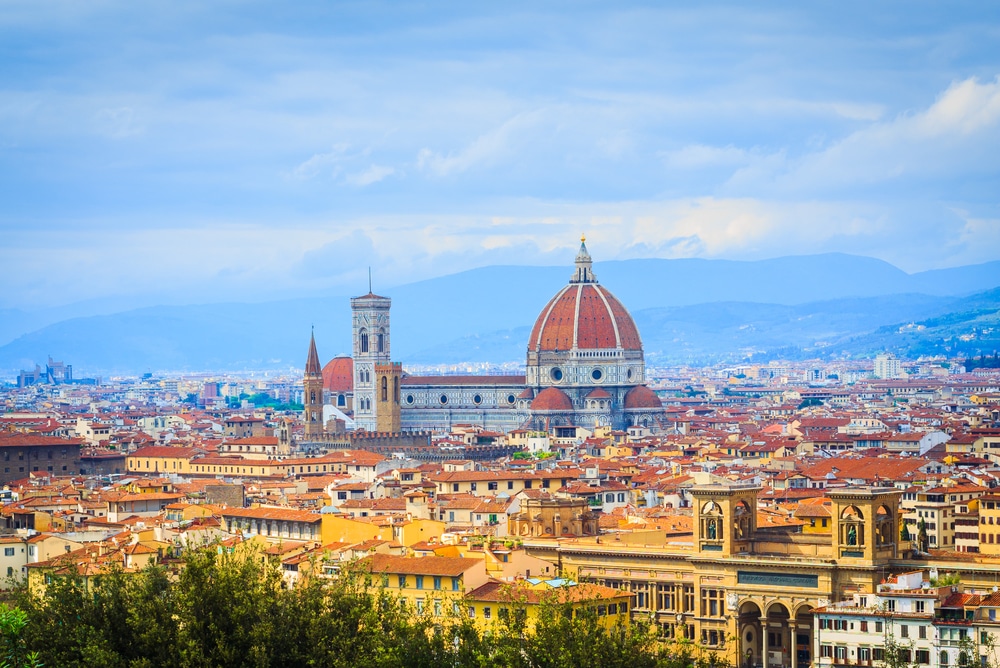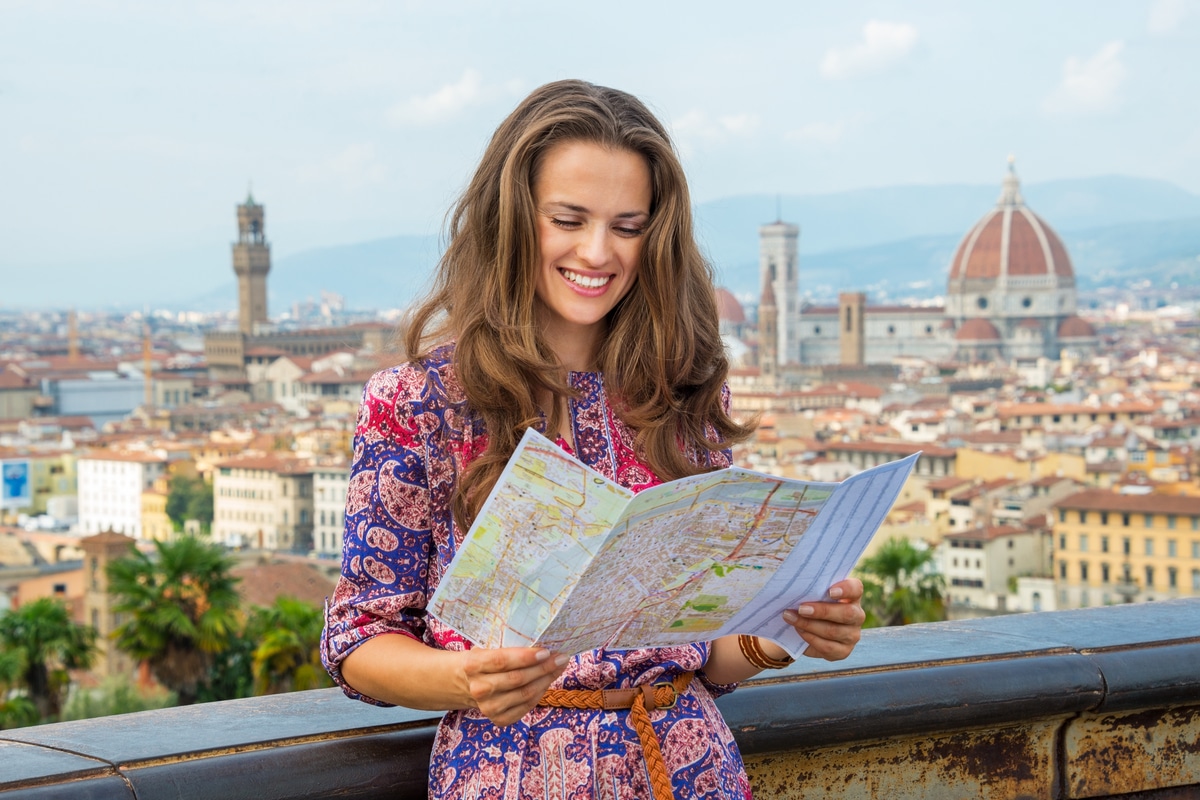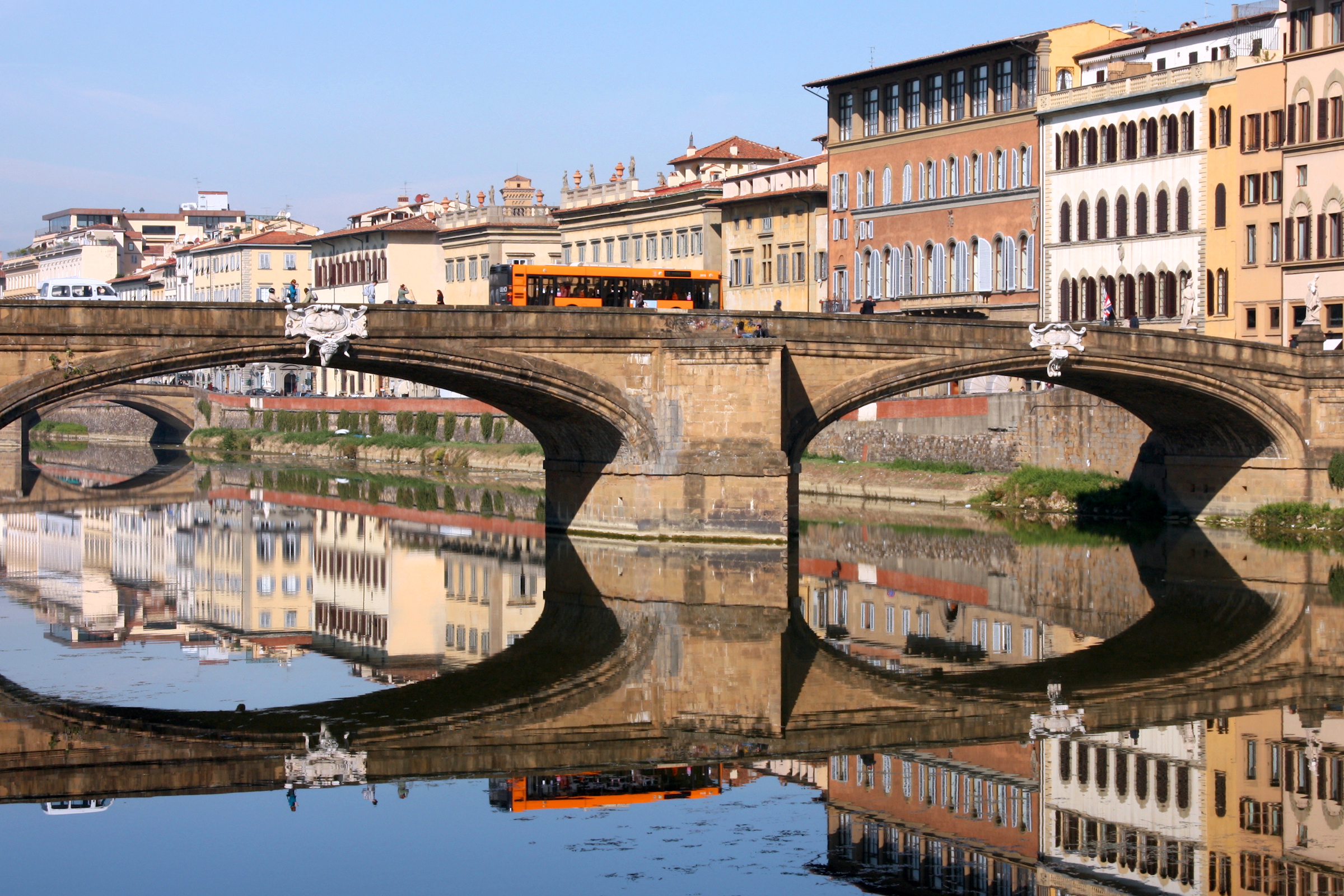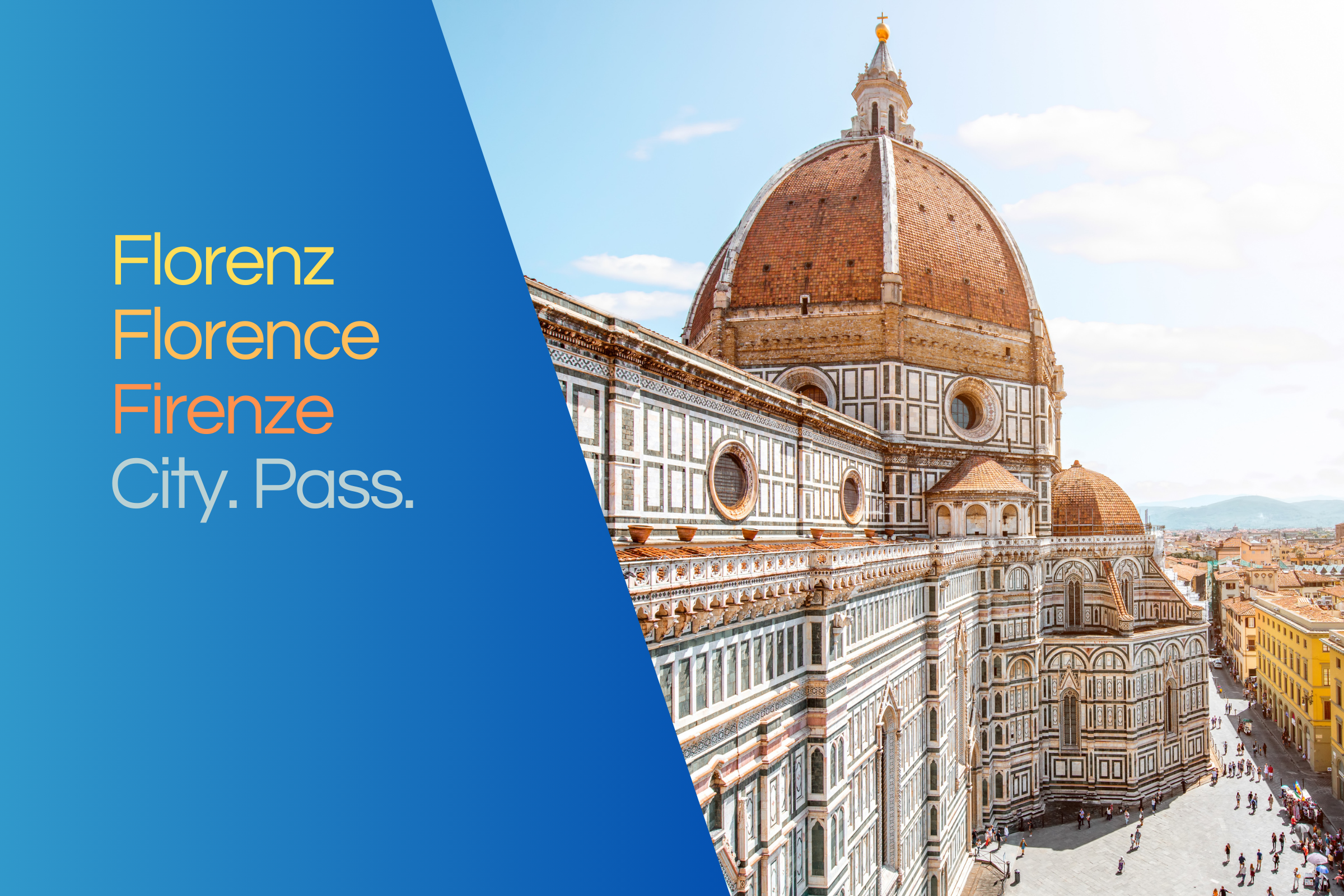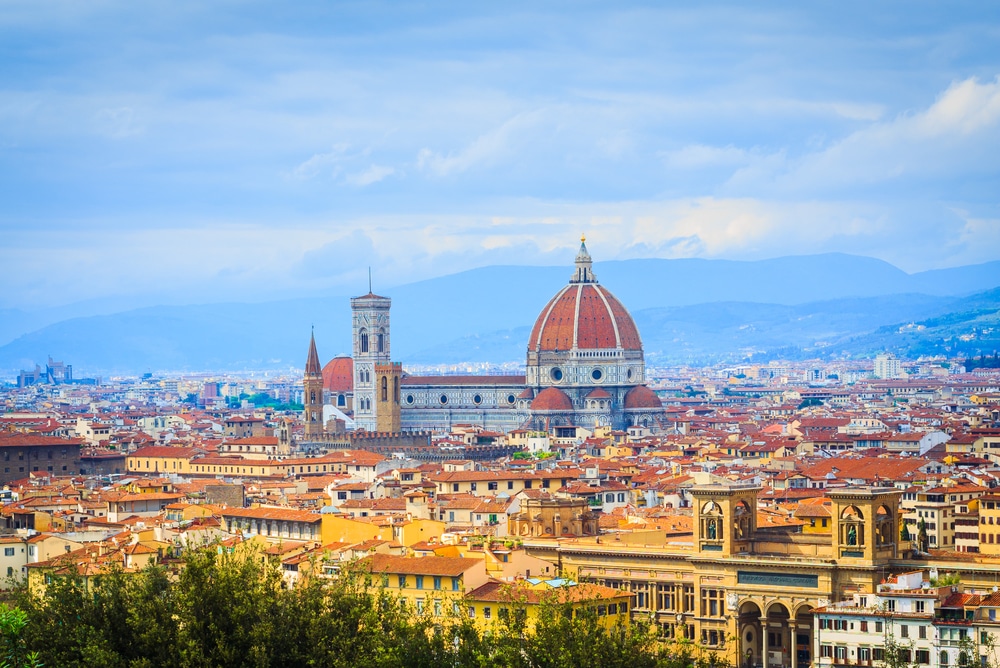Basilica di Santa Croce

In Florence, scholars have long argued over which of these houses of worship on the banks of the Arno is the most important. For some, this is by no means the historic cathedral but rather the Basilica di Santa Croce. After all, numerous personalities found their last resting place in this three-aisled church building from the 13th century: Michelangelo, Galileo, Rossini and also the often misunderstood but nevertheless brilliant philosopher Niccolò Machiavelli. Magnificent sarcophagi and tombs bear witness to the everlasting fame of these great Florentines. Originally, the poet and philosopher Dante Alighieri was also to be buried in the Basilica di Santa Croce, but the city of Ravenna refused to transfer his mortal remains. And so visitors to the Basilica in Florence marvel at nothing more than a monumental cenotaph - an empty mock tomb for the creator of the "Divine Comedy".
An open wood-painted roof truss
Gothic elements are impossible to miss in the world's largest Franciscan church in the heart of the city of Florence. The church measures 150 meters in length and 38 meters in width. The foundation stone was laid in 1295, and it took almost half a century for the basilica to be consecrated. The faithful who made the pilgrimage to this masterpiece by Arnolfo de Cambio at that time will have been surprised by the dimensions and the multiple forms of marble on the unique façade. The architect and sculptor de Cambio also restored the Baptistery of San Giovanni at Florence Cathedral and planned the layout of Palazzo Vecchio. De Cambio chose an open wood-painted roof truss for his design of the Basilica of Santa Croce.
The white marble from Seravezza
One of the most important leaders of the Florentine Madici family had the church rebuilt in 1565 by his court architect Giorgio Vasari. This mainly concerned the choir stalls and the side altars of the aisles. They are still kept simple today and are limited to a few utensils. The altarpieces depict the Passion, Death and Resurrection of Christ. The white marble for the pulpit comes from Seravezza, in the hinterland of the Apuan Alps in northern Tuscany. It is a masterpiece by Benedetto da Maiano, who was commissioned by the wealthy merchant Pietro Mellini to design the pulpit.
Tombs in the floor of the transept
The large number of tombs, including one in the floor of the transept, are a feature of this beautiful church. Among the famous Italians who rest in the Basilica di Santa Croce is Michelangelo Buonarroti, whose monument was conceived and realized by Giorgio Vasari between 1564 and 1575. He was not only an architect and court painter of the Medici, but also made a name for himself as a champion of the aesthetics of ancient art. Over the centuries, wealthy Florentine families had a total of ten chapels built on the former wall of the transept. Of particular note is the Cappella Baroncelli, with the superstructure of an altar from the workshop of Giotto di Bondone with the motif of the Coronation of Mary. Giotto also made some fescoes in the chapels.
A mixture of football and rugby
One day in November 1966, the Basilica di Santa Croce in Florence was hit by a flood. The Arno broke through all the ramparts and flooded the square in front of the church, which was five metres high under water and left damage in its wake. On the right side of the church is the gate to the complex of the Franciscan convent with the Museo dell' Opera and the so-called Pazzi Chapel. This city, hailed as the cradle of the Renaissance, is also, incidentally, something like the origin of football. The square in front of the Basilica di Santa Croce was the site of the historic "Calcio Storico Fiorentino" in the Middle Ages. This was a rather rustic mixture of football and rugby and a duel of Florentine men in picturesque costumes.
